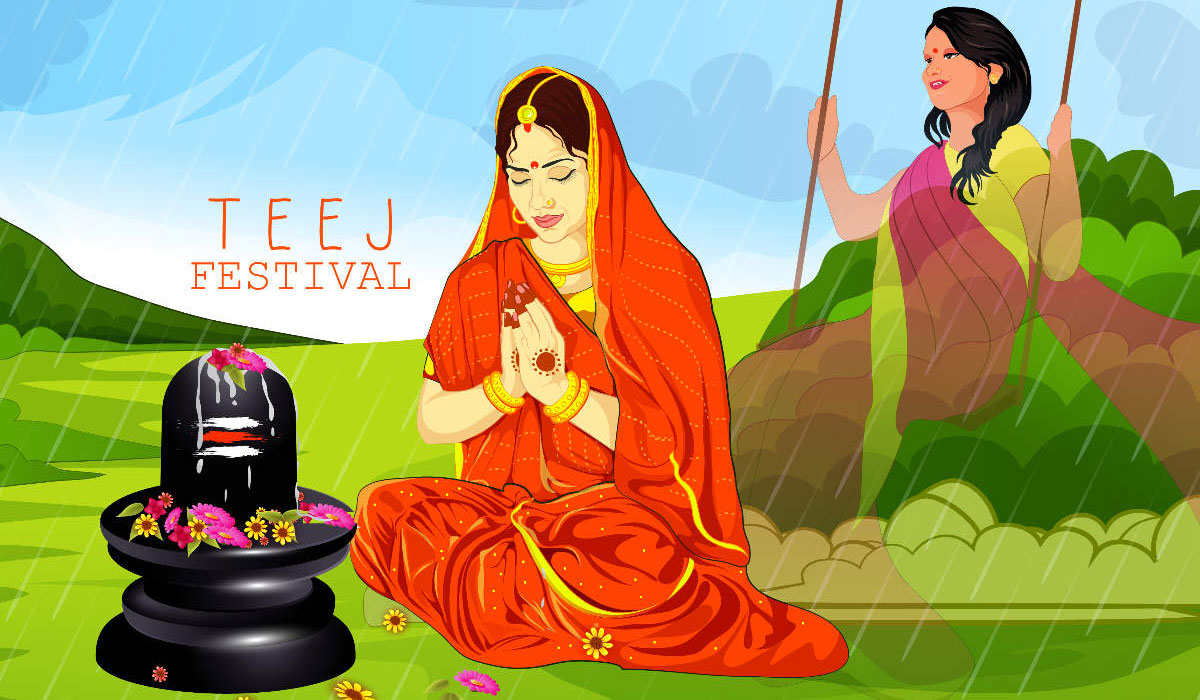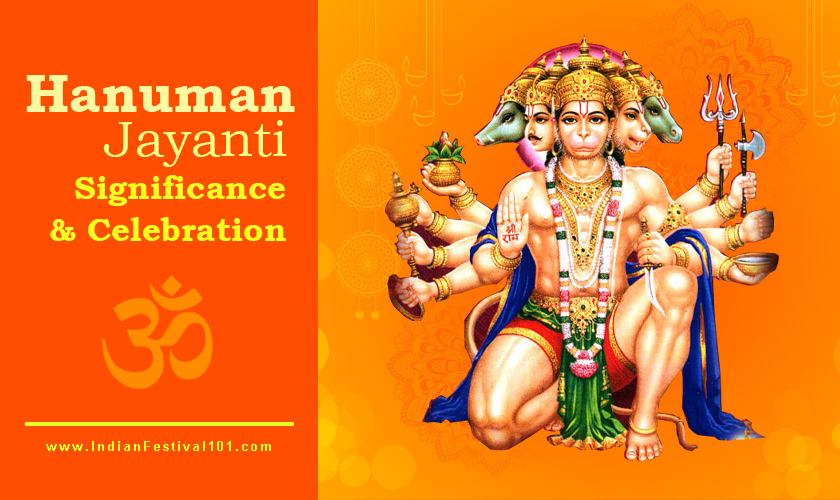Navratri is a festival dedicated to Goddess Durga. There are 4 Navratri that comes in a year. 2 Navratri is said as Gupt Navratri and celebrated by religious devotees while the other 2 are widely celebrated.
Navratri is one of the Most Important Hindu Festivals celebrated with much excitement, joy, and devotion. Since the festival continues for 9 days, each day has its own importance and meaning.
Here, we are going to talk about 9 different forms of Navdurga worshipped during the Navratri festival. We will also talk about the significance of Each day of Navratri.
According to a Hindu tradition, it is believed that there are three major forms in which Goddess Durga manifested her as-
- MahaSaraswati– who is the active energies (Shakti) of Brahma
- Mahalakshmi– who is the active energies of Vishnu
- Mahakali– who is the active energies of Rudra
It is believed that without these goddesses the gods will lose all their powers.
These three forms of Durga further manifested in three more forms each, and thus emerged the nine forms of Durga, which are collectively called Navadurga or Nine Durgas:
Shailputri – 1st Day of Navratri
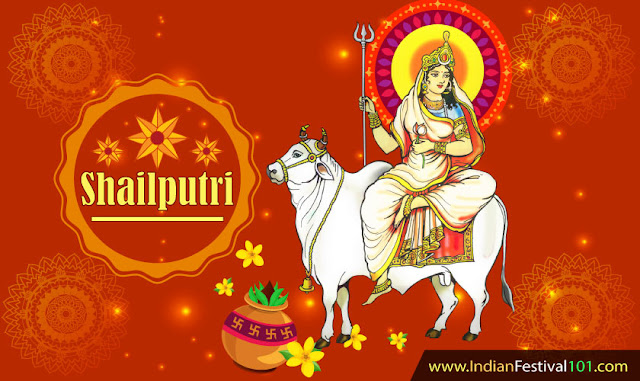 |
| Navratri Goddess-Shailputri |
Significance of Navratri First Day
Brahmacharini – 2nd Day of Navratri
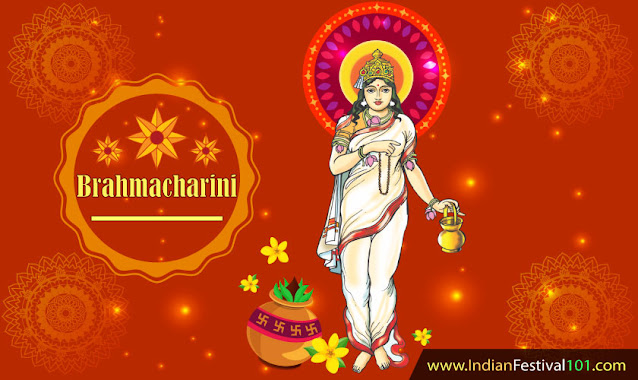 |
| Navratri Goddess- Brahmacharini |
The second day of Navratri is devoted to Goddess Brahmacharini. Brahmacharini is the holy form of Goddess Parvati in which she undertook penance to have Lord Shiva as her consort. One hand of Maa Brahmacharini holds a “Kumbha” or water port and the other hand holds a rosary. She personifies love and loyalty. Maa Brahmacharini is a storehouse of knowledge and wisdom. Rudraksha is her most adorned ornament.
Significance of Navratri Second Day
This day is especially sacred to meditate and explore people’s inner divinity. Know more about Devi Brahmacharini. Visit here:- Second Day of Navratri
Chandraghanta – 3rd Day of Navratri
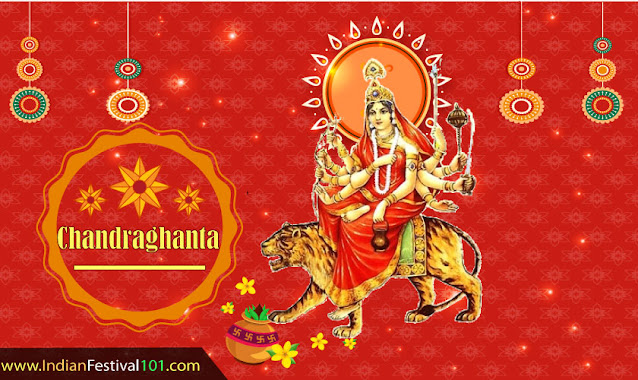 |
| Navratri Goddess- Chandraghanta |
The third day o Navratri is devoted to Goddess Chandraghanta. Maa Durga “Shakti” is astride a tiger, displays a golden hue to her skin, and possesses 10 hands and 3 eyes. Eight of Her hands display weapons while the remaining two are respectively in the mudras of gestures of boon giving and stopping harm. Chandra + Ghanta, meaning supreme bliss and knowledge, showering peace and serenity, like a cool breeze on a moonlit night.
Significance of Navratri Third Day
Kushmanda – 4th Day of Navratri
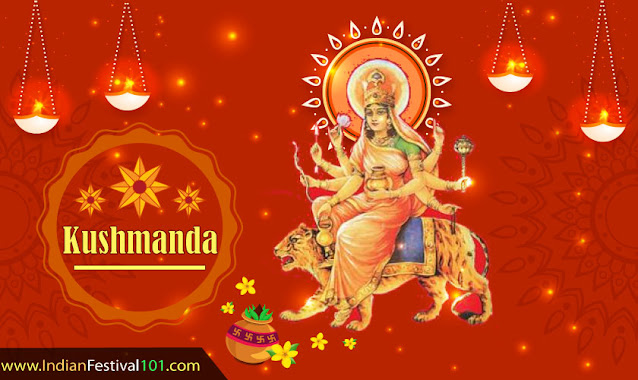 |
| Navratri Goddess- Kushmanda |
The fourth day of Navratri is devoted to Goddess Kushmanda. She possesses eight arms, holds weapons, and is a mala or rosary. Her mount is a tiger and she emanates a solar-like aura. “Kush+ Manda” means to see cosmic vivacity in Pindi shape or knowledge of cosmic intricacies in the human race. The abode of Maa “Kushmanda” is in Bhima Parvat.
Significance of Navratri Fourth Day
Devi Kushmanda blesses everyone with her divine energy.
Skandamata – 5th Day of Navratri
 |
| Navratri Goddess- Skandmata |
The fifth day of Navratri is devoted to Goddess Skandamata. On the fifth day,, people worship Devi Parvati’s motherly aspect. She uses a lion as a vehicle and holds her son, “Skand” in her lap while displaying 3 eyes and 4 hands. Two hands hold lotuses while the other 2 hands respectively display defending and granting gestures. It’s said that by the mercy of Maa “Skandmata”, even the idiot becomes an ocean of knowledge such as “Kalidas”.
Significance of Navratri Fifth Day
She brings an abundance of wealth, power, prosperity, and wisdom.
Katyayani – 6th Day of Navratri
 |
| Navratri Goddess- Katyayani |
The sixth day of Navratri is devoted to Goddess Katyayani. As Maa “Katyayani” stayed in the Ashram of sage Katyayan for penance, hence she was named “Katyayani”. Maa Katyayani is also astride a lion with 3 eyes and 4 arms. One left-hand holds a weapon and the other a lotus. The other 2 hands respectively display defending and granting gestures. Her complexion is golden-colored.
Significance of Navratri Sixth Day
People worship Devi Katyayani on the sixth day to put to rest all their inner foes that are obstacles on the journey of spiritual evolution.
Kalaratri – 7th Day of Navratri
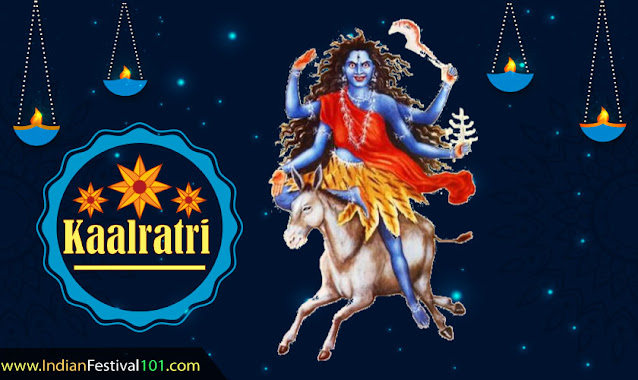 |
| Navratri Goddess- Kalratri |
The seventh day of Navratri is devoted to Goddess Kalaratri.
Black skin with bountiful hair, She has 4 hands, 2 clutching a cleaver and a torch, while the remaining 2 are in the mudras of “giving” and “protecting”. Maa Kalaratri is mounted upon a Donkey. The destroyer of darkness and ignorance, “Kalaratri” is the seventh form of Nav-Durga meaning scourer of darkness or enemy of darkness. Maa Kalratri’s famous shrine is in Kolkata.
Significance of Navratri Seventh Day
Devi Kalratri is one infinite dark energy that lights and houses many universes. Thu represents the dark night.
Mahagauri – 8th Day of Navratri
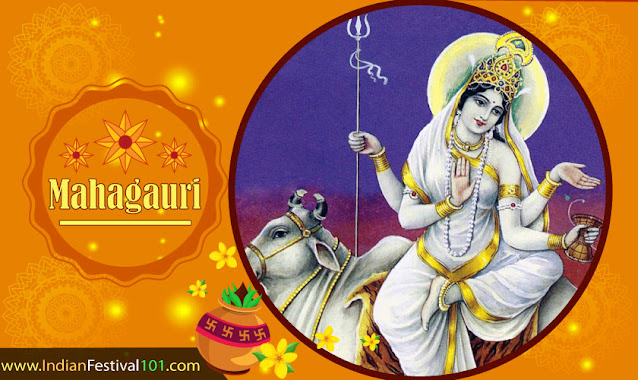 |
| Navratri Goddess- Mahagauri |
The eighth day of Navratri is devoted to Goddess Mahagauri.
She has 4 arms with the fairest complexion of all the Durga Shaktis. The peace and compassion radiate from her blessings and she is often dressed in a white or green sari. Mahagauri holds a drum and a trident and is often depicted riding a bull. Mahagauri can be seen in a temple at Kankhal near the pilgrim Centre Haridwar.
Significance of Navratri Eighth Day
Devi Mahagauri symbolizes a serene and beautiful aspect of Nature. She is the energy that spreads into lives and liberates people. Know more about Devi Mahagauri. Visit here:- the Eighth Day of Navratri
Siddhidatri – 9th Day of Navratri
 |
| Navratri Goddess- Siddhidatri |
The ninth day of Navratri is devoted to Goddess Siddhidatri.
Ensconced upon a lotus with 4 arms, and is the possessor of 26 different wishes to grant her devotees. Maa Siddhidatri’s famous pilgrim Centre is located in Nanda Parvat in the Himalayas.
Significance of Navratri Ninth Day
Devi Siddhidatri makes the impossible possible. She takes people beyond the logical mind to explore the realm beyond space and time. Know more about Devi Siddhidatri. Visit here:- Ninth Day of Navratri
The nine manifestations of Maa Durga that are worshiped with fervor during Navratri, are believed to lift the divine spirit in us and help us to overcome obstacles and get liberated from unnecessary qualities, and be filled with new freedom and purity.
All these nine names of Goddesses are described in “Devi Kavacha” of the Chandipatha scripture. Also called the Devi Mahatmyam or Devi Mahatmya (“Glory of the Goddess”). It is a Hindu religious text describing the victory of the goddess Durga over the demon Mahishasura.
As part of the Markandeya Purana, it is one of the Puranas or secondary Hindu scriptures and was composed in Sanskrit around 400-500 CE, with authorship attributed to the sage (Rishi) Markandeya. Devi Mahatmyam is also known as the Durga Saptashati or Chandi Path.
Also, Read-



